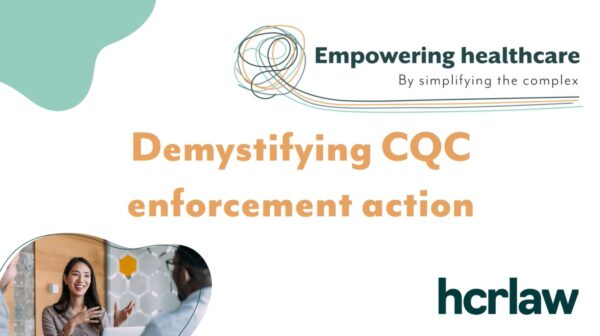

When providing care services, particularly within supported living and residential settings, property-related responsibilities between landlords, tenants, registered providers (RPs) and service providers (SPs) are often governed by a service level agreement (SLA).
An SLA defines the key obligations which each party bears, allocates risk and helps ensure legal and regulatory compliance.
This article explores the key practical and legal factors that both RPs and SPs should consider respectively when negotiating or reviewing an SLA concerning care-based accommodation.
1. Clearly define roles, responsibilities and cost allocations
A core requirement is to clearly define responsibilities from the outset, including:
- Repairs and maintenance
- Statutory compliance (e.g. gas and fire safety)
- Domestic duties (e.g. cleaning and waste management)
- Cost allocation (e.g. utilities, insurance and communal services)
- Recovery of charges, including for housing benefit arrangements.
2. Service standards and KPIs
SLAs should include clear service standards and KPIs, such as:
- Response times and time periods for repairs (emergency, urgent and routine)
- Compliance with property conditions, health and safety compliance and responsiveness obligations
- Agreed monitoring and reporting mechanisms.
3. Voids and void units
A key concern that is often overlooked is how ‘voids’ or ‘void units’ are managed financially and operationally if there is an accompanying lease of the property. A void or void unit is an unoccupied room or space in the accommodation that would ordinarily be filled by a supported individual as a ‘tenant’. The SLA should clearly define what constitutes a void/ void unit and what those voids include.
Further, the SLA should also expressly outline who bears the financial risk for voids and when such voids kick-in. For instance, is the SP expected to cover full rent or licence fees during a void period, or will there be a capped or shared liability? And will the SP be afforded a grace period for being responsible for voids?
It may also be worth including timebound thresholds – for example, the first four weeks of a void after termination of an occupied property are to be covered by the SP, thereafter the RP absorbs the cost.
The way in which this provision is negotiated and drafted within the SLA can have long term effects respectively for the RP and SP, therefore careful thought and consideration needs to be made here.
4. Dispute resolution and escalation
Be sure to clearly define internal resolution pathways, timelines for response and whether disputes affect ongoing obligations. Mediation clauses are highly recommended to prevent escalation to litigation.
5. Insurance and indemnities
Both parties should hold appropriate insurance policies relevant to the care and property in which the care is being carried out, and ensure that any warranties and/or indemnities included in the SLA are proportionate to their respective roles and risks.
6. Termination, step-in rights and continuity
An SLA will provide for adequate continuity of care. Therefore, always consider the following:
- Adequate termination rights for both cause and convenience, with suitable notice periods
- Step-in rights during a service failure for the RP or even the landlord or head landlord
- Exit procedures – consider handover, access, resident records and continuity of services for residents until replacements are in place.
Whether you’re an RP or SP, investing in a clearly written, legally sound SLA is essential for providing a compliant, collaborative and high-quality service.










